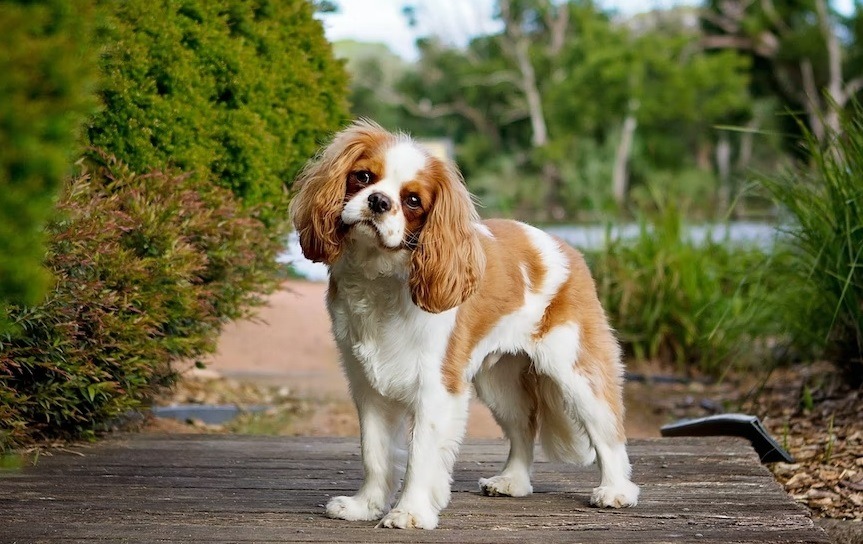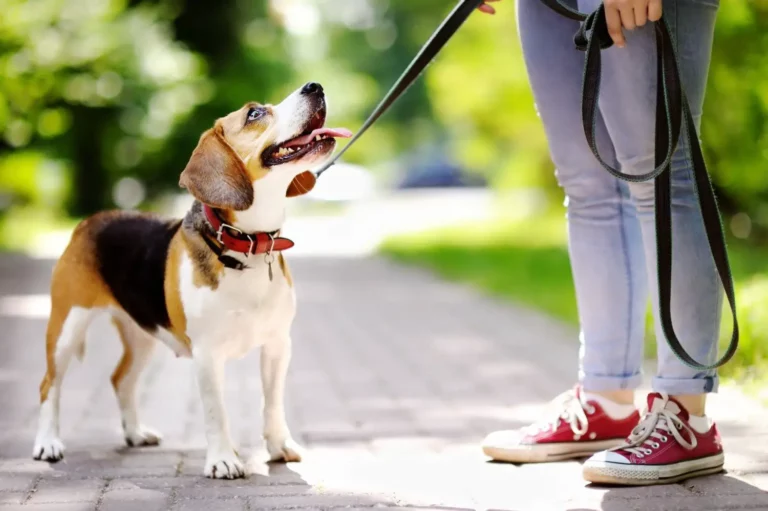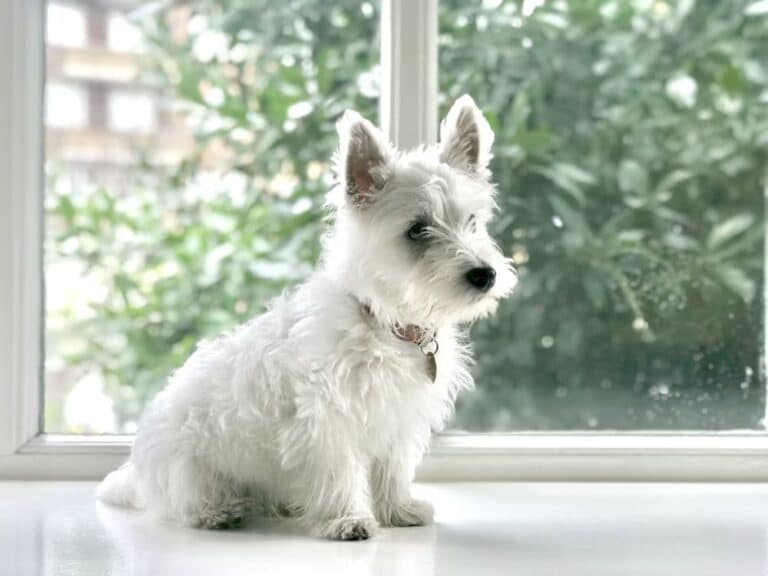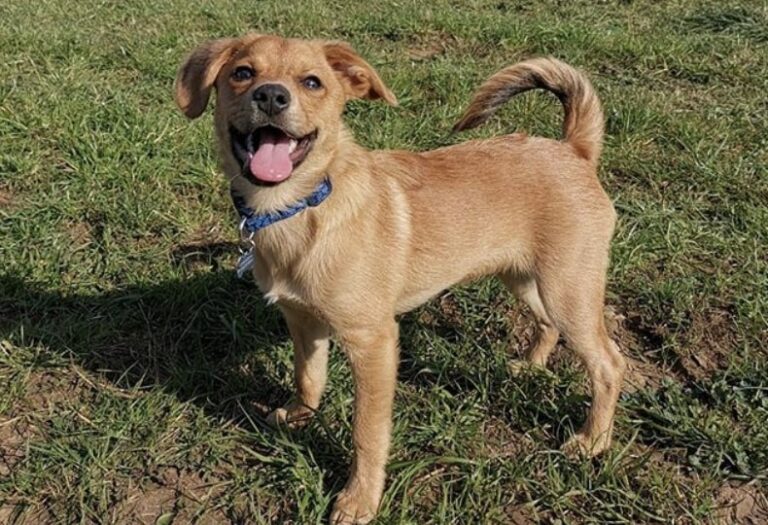Meet the Cavalier King Charles Spaniel – a breed that effortlessly blends elegance with an affectionate nature. With expressive eyes and a silky coat, these charming dogs have a rich history, transitioning from royal palaces to becoming beloved family members. Known for their friendly and adaptable demeanor, Cavaliers are not just pets; they’re loyal companions ready to share life’s moments with you. In this brief guide, we’ll explore their unique traits, touch on health considerations, and provide quick tips for responsible ownership. Whether you’re a seasoned dog lover or a first-time owner, get ready to welcome the joy of a Cavalier King Charles Spaniel into your life.
History and Origin of the Cavalier King Charles Spaniel
Origins in England
The Cavalier King Charles Spaniel has a rich history that dates back to England in the 17th century. These charming little dogs were originally bred as companion animals, specifically for the aristocracy and nobility. They were particularly favored by King Charles II, which is how they got their name.
During the reign of King Charles II, the breed thrived and became a symbol of luxury and status. They were often depicted in portraits alongside their royal owners, further increasing their popularity among the upper class. The breed’s elegant appearance and friendly nature made them a beloved choice of lapdogs.
Development of the Breed
Over time, the Cavalier King Charles Spaniel went through various developments to reach the form we know today. Initially, they had a slightly different appearance, with longer muzzles and taller bodies. However, in the 1920s, an American named Roswell Eldridge embarked on a mission to revive the original look of the breed, as seen in historical paintings.
Eldridge offered substantial cash prizes at dog shows, specifically for dogs resembling those depicted in King Charles II’s era. This led to a resurgence of interest in the breed, and breeders began selectively breeding dogs that matched the desired traits. The result was the establishment of the breed standard that we recognize today.
Thanks to the efforts of dedicated breeders and enthusiasts, the Cavalier King Charles Spaniel regained its former glory and recognition. The breed has gained immense popularity not only as a companion dog but also as a show dog and therapy dog due to its friendly and affectionate nature.
In conclusion, the Cavalier King Charles Spaniel has a fascinating history that can be traced back to England in the 17th century. With its origins deeply rooted in the aristocracy, this breed has evolved over time to become the beloved and iconic dog we know today.
Physical Characteristics of the Cavalier King Charles Spaniel
Size and Weight
The Cavalier King Charles Spaniel is a small to medium-sized breed. On average, adult males measure between 12.9 to 13.8 inches (33 to 35 cm) in height at the shoulder, while females are slightly smaller, measuring between 12.6 to 13.4 inches (32 to 34 cm). In terms of weight, Cavaliers typically range from 13 to 18 pounds (5.9 to 8.2 kg). However, it’s important to note that individual dogs may vary slightly outside of these ranges.
Coat and Colors
The Cavalier King Charles Spaniel boasts a beautiful and silky coat that is one of its most distinguishing features. Their coat is medium in length, often with a slight wave, and is known for its feathering on the ears, chest, legs, and tail. Cavaliers have four recognized color patterns:
- Blenheim: This color pattern consists of a rich chestnut color with white markings, mainly on the face (blaze), chest, and legs. The chestnut patches are often evenly distributed on the white background, creating a charming effect.
- Tricolor: Cavaliers with the tricolor pattern have a jet black coat with rich tan markings on their cheeks, eyebrows, chest, legs, and beneath the tail. The black and tan colors are well-distributed, creating an elegant appearance.
- Black and Tan: In this color pattern, the coat is predominantly black with tan markings above the eyes, on the cheeks, inside the ears, on the chest, and on the legs. The black and tan colors should be clearly defined and not intermingled.
- Ruby: This solid color pattern is characterized by a rich, lustrous red coat without any white markings. The coat should be even and glossy, showcasing the breed’s elegance and charm.
Facial Features
The Cavalier King Charles Spaniel has distinctive facial features that contribute to their irresistibly sweet expression. Their large, round, and expressive eyes are one of their most captivating features. The eyes are dark, set well apart, and are enhanced by well-pigmented eyelids. Cavaliers have a gentle and soft expression that reflects their friendly and affectionate nature.
The breed’s muzzle is moderately long and tapered, with a well-developed black nose. Their adorable ears are long, set high, and adorned with abundant feathering, which adds to their overall charm. Cavaliers have a well-proportioned face, with a gentle slope from the forehead to the nose, creating a harmonious and balanced appearance.
Physical characteristics of the Cavalier King Charles Spaniel encompass their size and weight, coat colors, and distinct facial features. These attributes contribute to the breed’s undeniable beauty and make them an adored companion for many dog lovers.
Temperament and Personality Traits
Affectionate and Friendly
Cavalier King Charles Spaniels are known for their affectionate and friendly nature. They thrive on human companionship and love to be part of the family. These dogs are incredibly loving and enjoy being the center of attention. They are always eager to please and will shower their owners with affection and loyalty.
Gentle and Playful
The Cavalier King Charles Spaniel has a gentle and playful personality. They have a natural inclination to get along well with children and other pets. Their gentle nature makes them a great choice for families with young children. They are patient and tolerant, making them an ideal companion for playtime activities. These dogs have a playful side and enjoy interactive games and toys.
Adaptable and Intelligent
Cavalier King Charles Spaniels are highly adaptable and intelligent dogs. They can easily adjust to different living environments and are well-suited for both apartments and houses. Their intelligence allows them to quickly learn new commands and tricks. They are eager to please their owners and are highly trainable. With proper training and socialization, they can excel in obedience and agility competitions.
Overall, the Cavalier King Charles Spaniel’s temperament and personality traits make them a wonderful addition to any family. Their affectionate nature, gentle demeanor, and adaptability make them an excellent choice for individuals or families looking for a loving and intelligent companion.
Caring for a Cavalier King Charles Spaniel
Exercise and Activity Needs
Cavalier King Charles Spaniels are energetic and playful dogs that require regular exercise to maintain their overall well-being. They enjoy daily walks, playtime, and interactive activities. Aim for at least 30 minutes to an hour of exercise each day to keep them physically and mentally stimulated. Engaging in activities such as fetch, agility training, or obedience training can be beneficial for their physical and mental development. Be cautious not to overexert them, as they are a small breed and may be prone to certain health issues.
Grooming Requirements
Cavalier King Charles Spaniels have a beautiful, silky coat that requires regular grooming to keep it in good condition. Brushing their fur a few times a week helps to prevent tangles and keep it shiny. Pay special attention to their feathered ears, as they can easily become tangled or matted. Regular ear cleaning is also crucial to prevent ear infections. Additionally, trimming their nails, brushing their teeth, and bathing them as needed are essential parts of their grooming routine. Maintaining good grooming habits not only keeps them looking their best but also contributes to their overall health and hygiene.
Health Considerations
While Cavalier King Charles Spaniels are generally healthy dogs, they are prone to certain health conditions that require attention. One of the most common health issues affecting this breed is mitral valve disease, which affects the heart. Regular check-ups with a veterinarian and monitoring their heart health are essential for early detection and management of this condition. Other health concerns may include syringomyelia, a neurological condition, and patellar luxation, a knee joint problem. It is crucial to provide them with a balanced diet, regular exercise, and a stress-free environment to minimize the risk of these health issues. Additionally, keeping up with their vaccination schedule, providing flea and tick prevention, and maintaining a clean living environment are important aspects of their overall health care.
By providing regular exercise, proper grooming, and addressing their specific health considerations, you can ensure that your Cavalier King Charles Spaniel leads a happy and healthy life. Remember to consult with a veterinarian for personalized care recommendations based on your dog’s individual needs.
Training and Socialization
Basic Obedience Training
Basic obedience training is essential for every Cavalier King Charles Spaniel. It helps in establishing a strong foundation for their overall behavior and ensures they are well-behaved companions. Here are some key aspects of basic obedience training for Cavaliers:
- Sit, Stay, and Lie Down: Teaching your Cavalier these basic commands helps in controlling their behavior and establishing your role as the leader. Practice these commands regularly and reward your dog with treats or praise for successful execution.
- Leash Training: Proper leash training is crucial for Cavaliers as they have a natural tendency to wander. Teach your dog to walk calmly on a leash without pulling, using positive reinforcement techniques. This will make walks enjoyable and safe for both of you.
- Come when Called: Training your Cavalier to come when called is vital for their safety, especially in potentially dangerous situations. Use positive reinforcement and treats to encourage them to respond promptly to your command.
House Training
House training, also known as potty training, is an essential aspect of owning a Cavalier King Charles Spaniel. Here are some tips to successfully house train your puppy:
- Establish a Routine: Set a consistent schedule for feeding, bathroom breaks, and playtime. Cavaliers thrive on routine, and having a predictable schedule helps them understand when and where they should relieve themselves.
- Positive Reinforcement: Reward your puppy with treats, praise, and affection every time they eliminate outdoors in the designated spot. Avoid punishment or scolding, as it can create fear and confusion in your puppy.
- Supervision and Crating: Keep a close eye on your puppy, especially during the initial stages of house training. If you can’t supervise, confine them to a crate or a small designated area to prevent accidents. Gradually increase their freedom as they become more reliable with their bathroom habits.
Socializing with People and Other Pets
Cavalier King Charles Spaniels are naturally friendly and sociable dogs. To ensure they grow up to be well-adjusted and comfortable in various social situations, proper socialization is crucial. Here’s how you can socialize your Cavalier:
- Exposure to Different Environments: Introduce your puppy to various environments, such as parks, different neighborhoods, and different types of surfaces (grass, pavement, etc.). This exposure helps them become more adaptable and confident in unfamiliar surroundings.
- Meeting People: Encourage your puppy to interact with different people, including adults, children, and individuals wearing hats, sunglasses, or uniforms. Teach them to approach calmly and politely, rewarding them for friendly behavior.
- Interaction with Other Pets: Gradually introduce your Cavalier to other well-behaved dogs and animals, starting with controlled and supervised interactions. Positive experiences with other pets help in shaping their behavior and prevent fear or aggression towards them.
Remember, training and socialization should be a continuous process throughout your Cavalier’s life. It strengthens your bond, ensures their well-being, and helps them become the well-rounded and happy companions they are known to be.
Common Health Issues and Lifespan
Heart Conditions
Cavalier King Charles Spaniels are prone to several heart conditions. One of the most common heart problems in this breed is mitral valve disease (MVD), which affects the function of the heart’s valves. MVD can lead to heart murmurs, heart enlargement, and eventually heart failure if left untreated. Regular check-ups with a veterinarian and proper medication can help manage this condition and improve the lifespan of your Cavalier King Charles Spaniel.
Ear Problems
Another health issue commonly seen in Cavalier King Charles Spaniels is ear problems. Their long, floppy ears make them more susceptible to ear infections. It is essential to clean and inspect their ears regularly to prevent any infections or buildup of wax. Regular grooming and proper ear care can help minimize the risk of ear problems and ensure the overall well-being of your furry friend.
Syringomyelia
Syringomyelia is a serious neurological condition that can affect Cavalier King Charles Spaniels. It is characterized by the formation of fluid-filled cavities in the spinal cord, which can cause pain, weakness, and coordination difficulties. This condition is often associated with the shape of their skull, which is relatively small and dome-shaped. If you notice any symptoms such as neck or back pain, scratching at the neck, or changes in behavior, consult a veterinarian for a proper diagnosis and treatment plan.
Average Lifespan
The average lifespan of a Cavalier King Charles Spaniel is around 9 to 14 years. However, with proper care, a healthy diet, regular exercise, and routine veterinary check-ups, some Cavaliers have been known to live even longer. It is crucial to provide them with a balanced diet, maintain their weight within a healthy range, and ensure they receive appropriate exercise to promote their overall health and longevity.
Remember, while Cavalier King Charles Spaniels are generally healthy dogs, it is important to be aware of these common health issues and take preventive measures to ensure a happy and healthy life for your furry companion.
Finding and Choosing a Cavalier King Charles Spaniel
Reputable Breeders
When looking to bring a Cavalier King Charles Spaniel into your home, it is important to find a reputable breeder. Reputable breeders prioritize the health and welfare of their dogs and strive to produce puppies with sound temperaments and good overall health. Here are some key considerations when searching for a reputable breeder:
- Health Testing: Reputable breeders will conduct various health tests on their breeding dogs to ensure they are free from genetic diseases commonly found in the breed. Tests may include heart, eye, and hip evaluations, among others.
- Breeding Standards: A reputable breeder will adhere to breed standards set by kennel clubs or breed associations. They will aim to produce puppies that conform to these standards in terms of appearance, size, and temperament.
- Socialization and Care: Puppies from reputable breeders are typically raised in a loving home environment. They receive proper socialization and early exposure to various stimuli, which helps them develop into well-adjusted dogs.
- References and Reviews: Check for references and reviews from previous buyers of the breeder’s puppies. Positive feedback and satisfied customers are indicators of a reputable breeder.
Adoption and Rescue
Adopting or rescuing a Cavalier King Charles Spaniel can be a wonderful way to provide a loving home to a dog in need. Here are some considerations if you decide to go down this route:
- Rescue Organizations: Research local rescue organizations that specialize in Cavalier King Charles Spaniels. These organizations often have dogs of different ages available for adoption. They carefully evaluate the dogs’ temperaments and health before placing them in new homes.
- Breed-Specific Rescue Shelters: Look for breed-specific rescue shelters that focus solely on Cavalier King Charles Spaniels. These shelters have extensive knowledge about the breed and can guide you in finding the right dog for your home.
- Health and Behavioral Assessments: Dogs available for adoption through rescue organizations or shelters usually undergo health and behavioral assessments to ensure they are suitable for adoption. This helps in finding a compatible match for your lifestyle and preferences.
- Adoption Fees and Requirements: Be prepared for potential adoption fees and certain requirements set by rescue organizations or shelters. These may include home visits, reference checks, and sometimes a trial period to ensure the dog fits well into your family.
Considerations for Choosing
When choosing a Cavalier King Charles Spaniel, there are several factors to consider to ensure the breed is the right fit for you and your lifestyle:
- Size and Exercise Needs: Cavaliers are small to medium-sized dogs, but they still require regular exercise to keep them mentally and physically stimulated. Consider if you have enough time and energy to provide them with daily walks and playtime.
- Temperament and Compatibility: Cavaliers are known for their friendly and affectionate nature. They generally get along well with children, other pets, and even strangers. Assess if their temperament aligns with your family dynamics and living situation.
- Grooming Requirements: Cavaliers have a beautiful, silky coat that requires regular brushing to prevent matting and keep it in good condition. If you are not prepared for regular grooming sessions, this may not be the right breed for you.
- Potential Health Concerns: Like any breed, Cavaliers have certain health predispositions. These may include heart conditions, eye problems, and neurological disorders. Familiarize yourself with these potential health concerns and be prepared for any necessary medical care.
- Longevity and Commitment: Cavaliers have an average lifespan of 9-14 years. Consider the long-term commitment and responsibilities associated with caring for a dog throughout its life.
By considering these factors, you can make an informed decision when choosing a Cavalier King Charles Spaniel that will become a cherished member of your family.
Cavalier King Charles Spaniel as a Pet
Cavalier King Charles Spaniel is a wonderful breed that makes for a loyal and loving companion. With their friendly and affectionate nature, they are perfect for families and individuals alike. Their small size and adaptability make them well-suited for both apartment living and larger homes with yards.
This breed is known for their intelligence and eagerness to please, making training relatively easy. They are generally good with children and other pets, although early socialization is important to ensure they develop good manners and behavior.
While they do require regular grooming to maintain their beautiful coat, the Cavalier King Charles Spaniel’s overall maintenance needs are minimal. They are generally healthy dogs, but like any breed, they may be prone to certain health issues such as heart conditions and eye problems. Regular veterinary check-ups and a balanced diet can help ensure their well-being.
If you are looking for a companion that will bring joy, love, and loyalty into your life, the Cavalier King Charles Spaniel is an excellent choice. Their gentle and affectionate nature, coupled with their adaptability and intelligence, make them a popular choice for many dog lovers. So, if you are ready to welcome a furry friend into your home, consider the Cavalier King Charles Spaniel and experience the joy they bring to countless families around the world.







